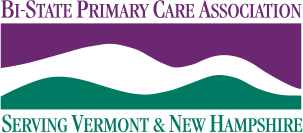
Food & Nutrition Insecurity in Vermont
Food and nutrition insecurity in Vermont is a significant challenge, with many residents lacking reliable access to sufficient, nutritious food. Contributing factors include economic disparities, rural isolation, and limited access to affordable, healthy food options. This insecurity not only impacts physical health but also mental well-being and overall community resilience. Addressing these issues requires a coordinated approach, focusing on systemic changes, community support, and policy interventions to ensure that all Vermonters can access the food they need to lead healthy lives.
More about Food & Nutrition Insecurity in Vermont
Food security reflects a household’s ease of access to adequate food. Food insecurity reflects progressive levels from anxiety about food availability to lowering diet quality to (at the highest level) reducing both the quality and quantity of food consumed, due to socio-economic factors (USDA, accessed 2022 ).
Nutrition security means all Americans have access to healthy, safe, affordable foods essential to optimal health and well-being (USDA, accessed 2022 ). See also the USDA / NIFA nutrition insecurity webinar series , launched in 2021.
The U.S. Department of Agriculture (USDA) has tracked food insecurity in the U.S. since the 1990s. Their website provides data, reports, trends, analysis, and survey tools for measuring food security. The USDA also works on ensuring nutrition security, which can be interpreted to mean a diet adequate for an individual’s good health.
A recent 2024 survey conducted by the University of Vermont and the University of Maine of nearly 1,500 residents in Vermont and Maine revealed the lasting impacts of financial shocks on food-insecure households. The study highlights the complex challenges these households face, including financial strain, food access barriers, health care limitations, and increased rates of anxiety and depression. Many respondents reported skipping bills to afford food, struggling with transportation, and making difficult trade-offs between nutrition, medical care, and other basic needs. These findings emphasize the urgent need for policies and programs that address the interconnected issues of food security, health care access, and financial stability.

Federal Food Assistance Programs
Contact Us
Interested in learning more? Contact us at Bi-State Primary Care Association for more information.



